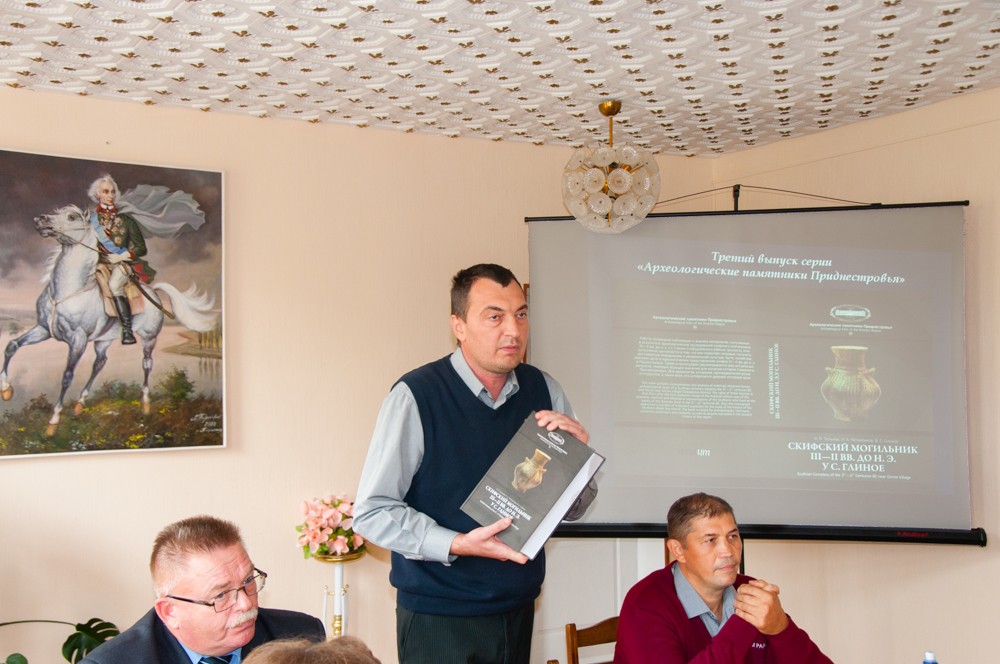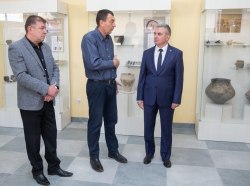Tiraspol, 30 September. /Novosti Pridnestrovya/. Pridnestrovian State University held a presentation of the monograph «Scythian Burial of the 3−2 Centuries BC Near Glinoye Village». This book is the result of the years of excavations in the famous among scientists Scythian necropolis in Slobodzeya district. The authors of the monograph — Pridnestrovian archaeologists Vitaly Sinika, Igor Chetverikov and Nikolay Telnov — prove that the steppe culture of the Great Scythia in Pridnestrovie continuously existed in the 3−2 centuries BC, although it was earlier thought it had died away two centuries before. The monograth describes unique artefacts attesting to the amazing cultural symbiosis that took place in ancient times in the territory of Pridnestrovie.

Scythian culture is a huge conglomerate of Indo-European nations inhabiting the North Black Sea steppes more than 2,500 years ago. It is considered that the Dniester was the western border of the Scythian world. Here, in Pridnestrovie, Scythian traces are left in numerous burial mounds — cult earthen pyramids. According to archaeologists, the Scythians came to the Dniester banks in the end of the 7th century BC (over 2,600 years ago). Scientists lost the track of the Scythians after the 4th century BC. It was assumed until recently that the Scythians were ousted from the Northwest Black Sea region by the Sarmatians (the Iranian people who came from across the Don river). However, thanks to the necropolis near the village of Ginoye, Pridnestrovian archaeologists have proved that Scythian culture developed in Pridnestrovie over the following two centuries.
«This is one of the biggest achievements. This work is not only important for the study of the history of Pridnestrovie, but the entire Eurasia as well," says one of the co-authors, Vitaly Sinika.
on the photo: authors of the monograph Vitaly Sinika (standing) and Igor Chetverikov (to the right)

The excavations of the Scythian «city of the dead» on the north-eastern outskirts of Glinoye started back in 1995 and continued for 18 years — the last tomb was explored in 2012. The entire post-Soviet era (after 1991) has not seen such large-scale studies of Scythian burial monuments in the Northern Black Sea region.
on the photo: one of the monograph authors, Vitlay Sinika, during the excavations of 'the city of the dead' near Glinoye village in 1999

On a territory of 50 ha archaeologists have discovered 181 tombs. This is the part of the necropolis that was not affected with contemporary buildings. According to indirect data, the southern part of the ancient «city of the dead» is now under the houses of Glinoye villagers.
on the photo: part of the necropolis near Glinoye village, Slobodzeya district

During the years of excavations, archaeologists have found amazing underground catacomb-like structures. The Scythians created their tombs at a depth of 2−6m. These are pretty spacious underground rooms with household items, weapons and lavish decoration. A small corridor, called in Greek dromos [way], served as an entrance to the tomb. It connected the tomb with an entrance shaft leading to the surface. This shaft was covered up with earth immediately after the burial rite with a small mound at the top of it.
Archaeologists have found burial sites thanks to bright spots on the black soil. The fact is that mounds over entrance shafts were made of the clay extracted at a depth of up to 6m during the construction of the underground room. Time and ploughing works have destroyed these mounds, spreading the clay a few metres around the place of burial. This light clay, however, is very well visible on plough-land, which became a perfect indicator for researchers. In such places, archaeologists removed the upper layer of black soil and found a rectangular spot — the «door» of the entrance shaft.
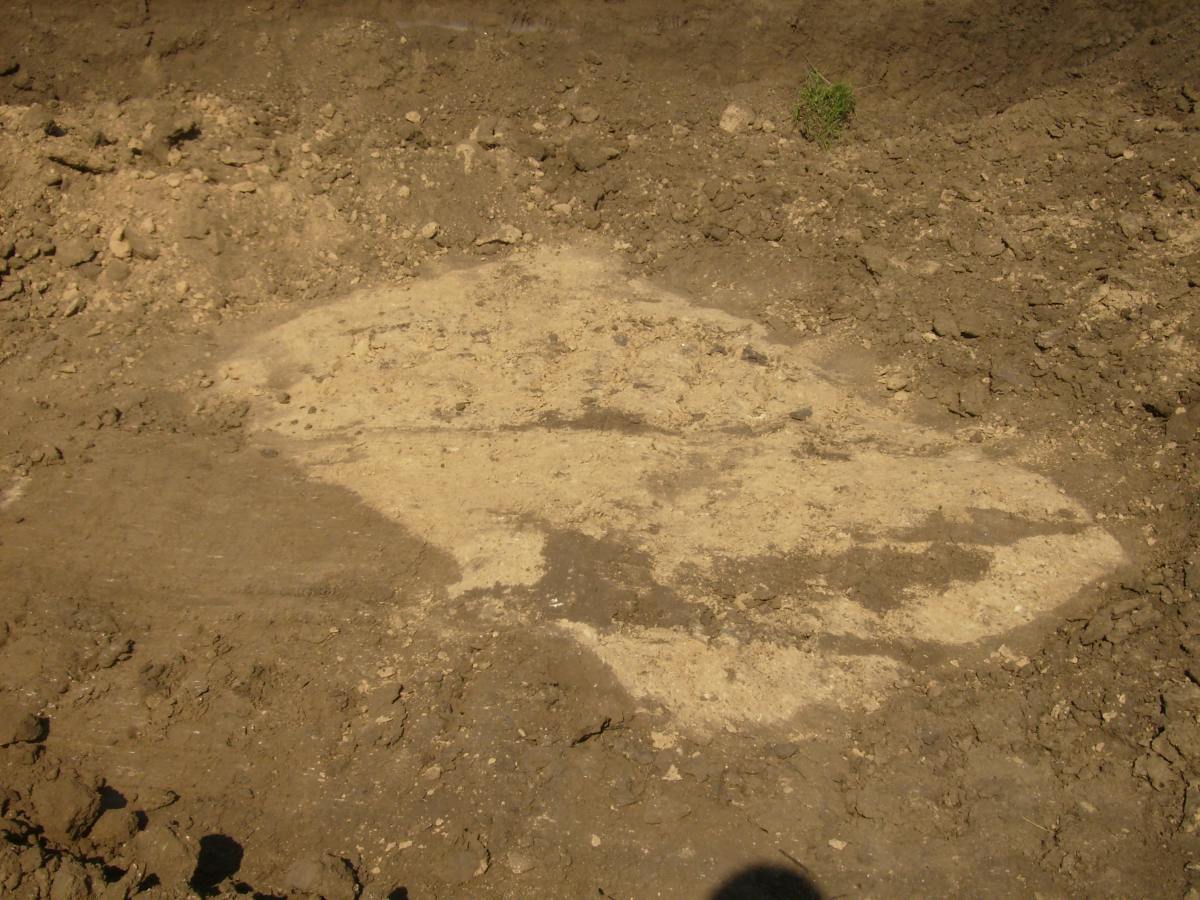
The shaft used to be cleared manually, without shovels. This was pretty difficult given that the depth of many shafts was four and in some cases six metres. The clay filling of shafts was rather loose unlike solid natural ground. Thanks to that, archaeologists fixed the walls of the shaft and its bottom.

After clearing the shaft, researchers removed a clay «stopper» from the dromos leading to the tomb. The front sides of some dromoses were decorated with original embossed images — curved lines or cryptic drawings.

Through the dormos archaeologists entered the underground room and began to clear it. Many tombs have remained intact, despite over two millennia.
on the photo: one of the monograph author, Igor Chetverikov, working underground, 2007

Other tombs, however, have failed to sustain the pressure of soil — the vault collapsed and soil filled almost the entire space of the catacomb. In such cases archaeologists had to dig into the construction from the top. They marked up a large square on the surface and manually removed solid clay soil until they reached the tomb.
In constructions of the «city of the dead» researchers have found a large number of artefacts. During the excavations about 50,000 unique objects were extracted from underground.
A prominent place among artefacts is occupied by antique amphoras — large carafes for wine with a cone-shaped bottom for fixing them in special niches. The capacity of such vessels varies from 10 to 20 litres. Many amphoras have a manufacturer's mark. These marks are perfect time indicators, thanks to which a tomb's age can be determined with an accuracy of up to 20 years.

Tombs contained other antique imports as well.
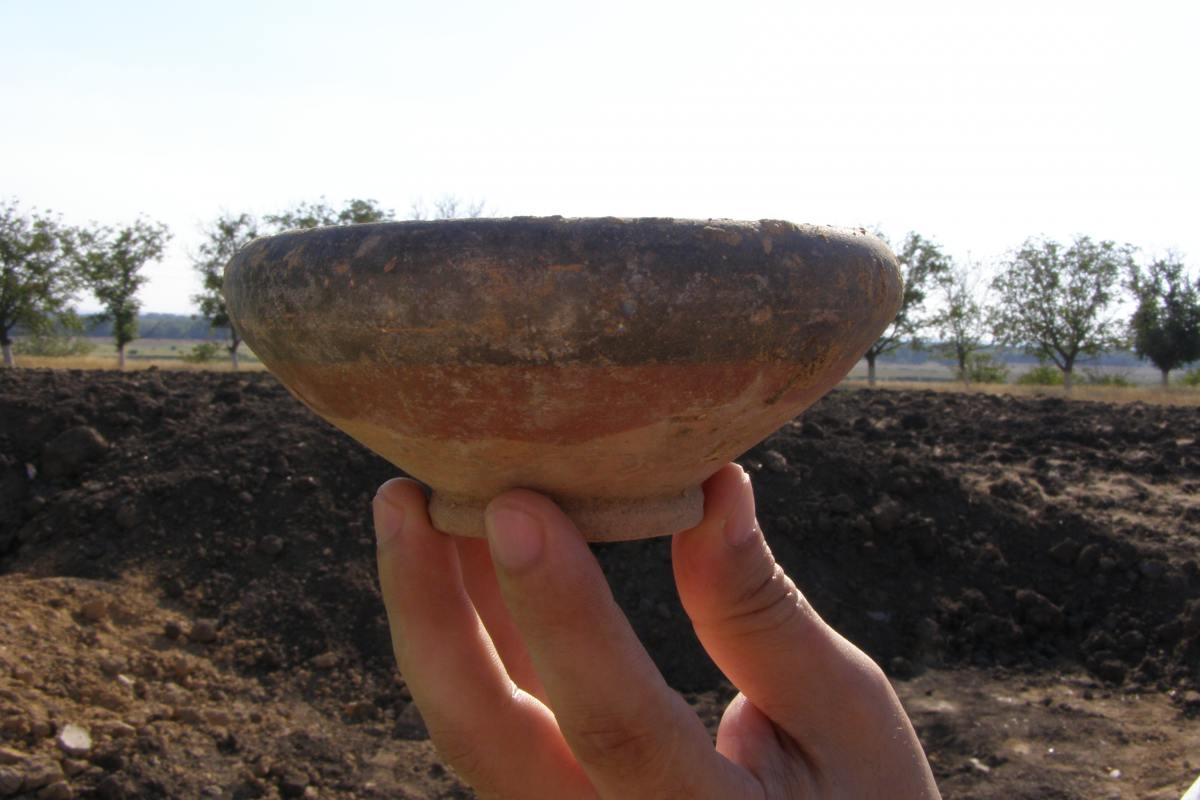
To proper Scythian objects belong censers — jar-like ritual vessels. They were filled with aromatic herbs, chiefly with hemp. The remnants of herbs at censer bottoms have provided much information about the ancient steppe vegetation.
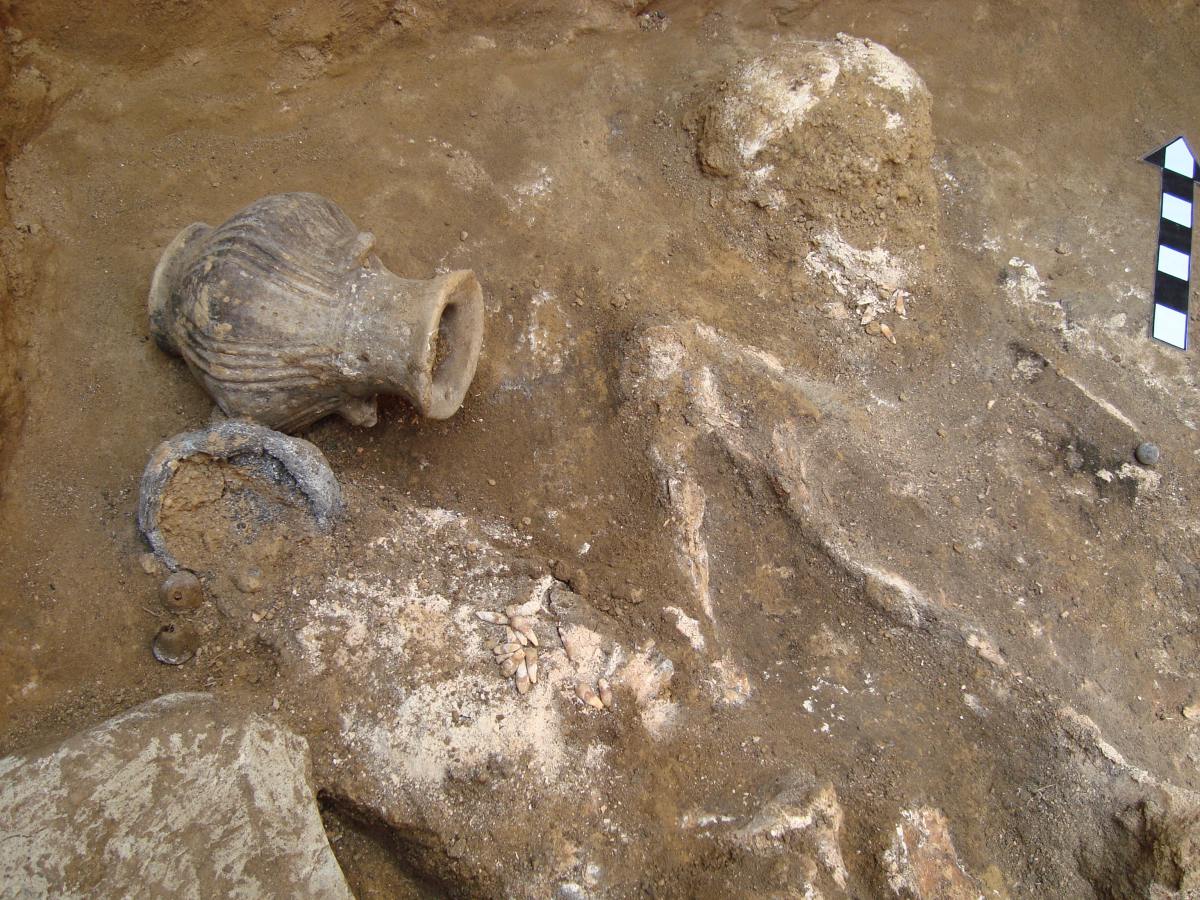
Some of the numerous tomb artefacts are big earthenware bowls with the remnants of sacrificial food.

In most cases, tombs contained weapons. Bronze three-side arrowheads, iron spears and darts, axes helped the Scythians to solve security issues. Even female tombs contained weapons.

The remains of dogs were often found in underground tombs or at the entrance to them. Judging by the bones, dogs were quite large.

Some artefacts found in Scythian tombs were the result of trade relations with the Thracians and Celts. For example, this bronze fibula (a clothing buckle).

Objects found in the tombs of the necropolis, have allowed researchers to make an important discovery — the Scythian steppe culture in Dniester existed continuously in 3−2 centuries BC, continuing the tradition of the preceding culture in the region. The systematisation and analysis of the discoveries took four years. Only in 2016 were all excavation materials and their interpretation published in the monograph presented yesterday. The amount of information is huge — the volume of the book is 1096 pages. Research centres from Russia, Ukraine and European countries have already shown interest to the publication. Out of 200 printed copies, 170 have been ordered by various universities and libraries of the world.
In recent years Pridnestrovian archaeologists have been closely cooperating with their foreign colleagues. Scientists from CIS and EU countries call Pridnestrovie an «archaeological Klondike», a contact zone where ancient cultures of the East and the West interact. Meanwhile, about 150 historical monuments are annually destroyed in Pridnestrovie as a result of various earth works. Experts say that the law «On protection of cultural heritage» as well as the regulations «On historical and cultural expertise» do not work properly.
Alexander Koretsky

